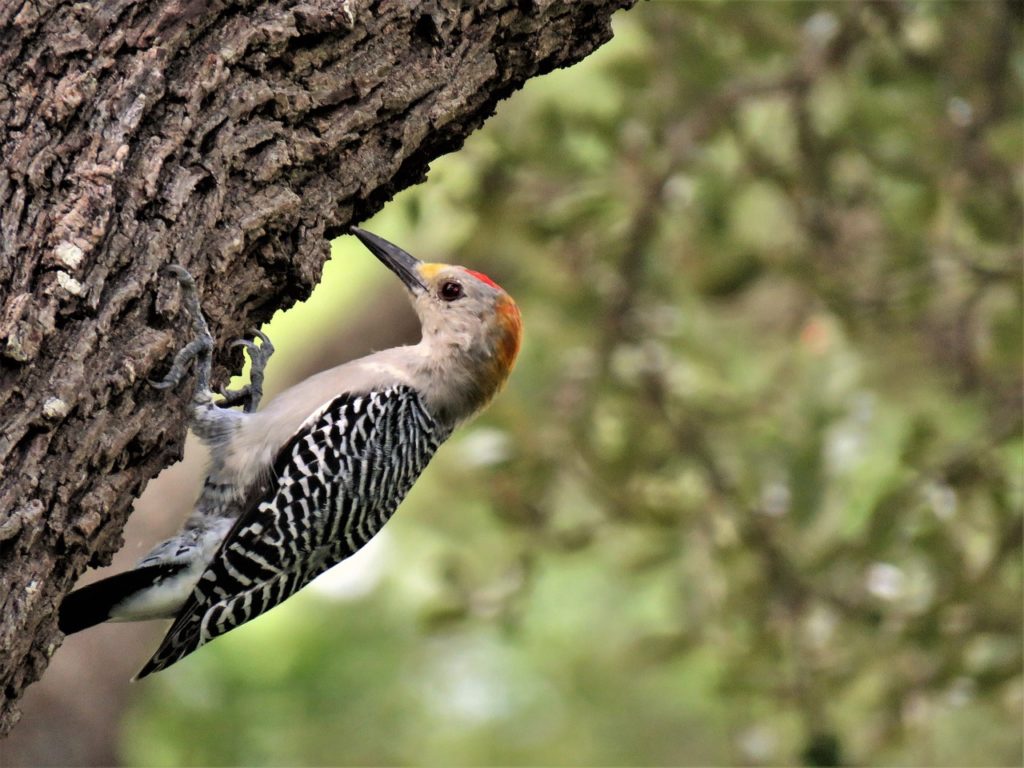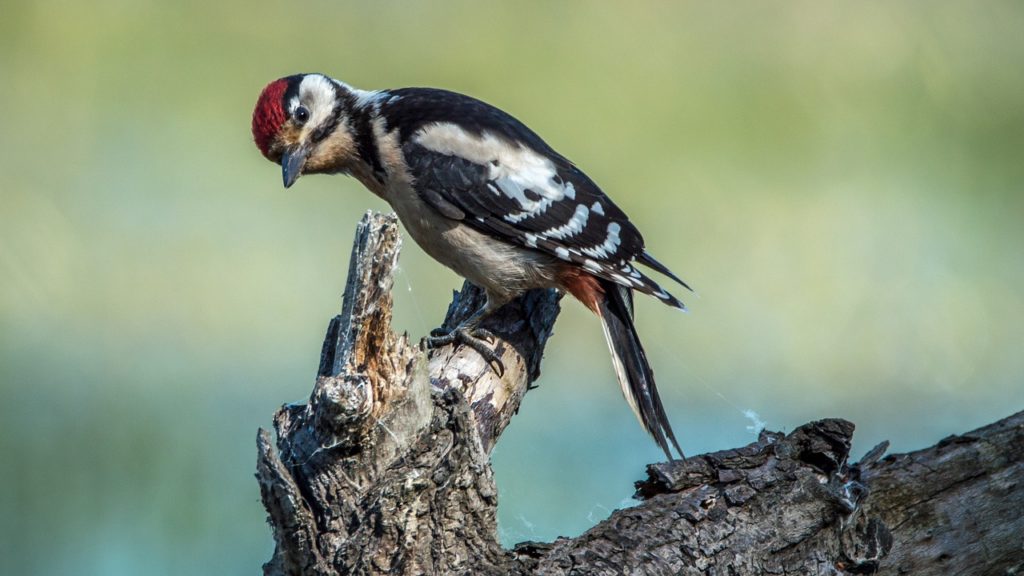The lives of woodpeckers
by Ailsa Harvey · 26/01/2020

Discover how these boisterous birds are built to eat, make nests and communicate by whacking on wood
Woodpeckers are a very successful animal family. Over 180 species of these distinctive birds are found worldwide, and they appear on every continent except Australia and Antarctica. They are adapted to many different habitats – you can spot woodpeckers in tropical rainforests and woodlands, but also in grasslands and bamboo forests.
Best known for hammering trees, woodpeckers’ three layered beaks are built for heavy-duty use. The outer layer is made of keratin scales, the same substance that makes up rhino horns. The middle layer is made up of porous bone, and the inner layer of bone with collagen fibres. Together, this construction minimises mechanical stress, which is a good thing, since the average woodpecker will smack its beak against something a staggering 12,000 times per day! These birds lead a busy, noisy life.
There are multiple reasons that woodpeckers loudly thwack things with their beaks. In addition to searching for food, they also create nest cavities and communicate with each other by rapping on objects in specific rhythms. They wield their beaks like a chisel or a drill. They will crowbar back pieces of bark to grab bugs hiding behind, but also bore directly into trees to reach larvae and insects. A woodpecker will grab prey with the tip of its probing tongue, with some species featuring barbs on their tongues to help secure more food.
Some feed specifically on cactus fruits. Others amble along the ground licking up ants. Still, others store away whole caches of acorns by hammering them into oak trees one nut at a time. But most woodpeckers are willing to eat a variety of food. They feast on caterpillars, spiders, fruit, tree sap, lizards and even other birds’ eggs. Both males and females hollow out tree cavities to rear young. Once the blind and featherless babies hatch, the parents alternate bringing food to the nest or guarding it until the young leave home, typically after 25-30 days.
Since they don’t sing, woodpeckers will perform a type of pecking called drumming to warn about predators, mark territory against a rival or attract a mate. They’ll often peck artificial objects to create a deeply resonant sound, which means you may find woodpecker holes in utility poles, and dents in bins, rain gutters or the siding on houses.

Avoiding head injuries
You’d think woodpeckers would sustain multiple concussions with their persistent pecking. Fortunately, their bodies are built to withstand this substantial abuse. Being small helps woodpeckers handle the G-forces associated with sudden stops much better than the bigger brains of other animals.
Our brains are like the yellow yolk inside an egg. When our egg heads come to a quick halt, our brains smack into the outer shell. However, woodpecker brains almost directly touch the inside of their skull. This means the brain doesn’t slosh around and bump against the skull during impact. Their skull is also made of thick, spongy bone.
This construction is a kind of shock absorber, like having a helmet on while you’re riding your bicycle. Another advantage is that the bone that houses the tongue, called the hyoid, encircles the skull. It’s essentially a seat belt for the brain. Pretty heady stuff!
This article was originally published in How It Works issue 97, written by Joe Levit
For more science and technology articles, pick up the latest copy of How It Works from all good retailers or from our website now. If you have a tablet or smartphone, you can also download the digital version onto your iOS or Android device. To make sure you never miss an issue of How It Works magazine, subscribe today!




